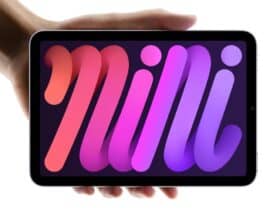iOS 17 offers different formats for capturing images
 Email Facebook x.com Reddit
Email Facebook x.com Reddit
Apple's iOS 17 release is a game-changing feature for iPhone photographers — ability to change ProRAW format settings. Here's where to change the format and what each one has to offer.
By understanding and using these settings, iPhone photographers can take full advantage of their device, ensuring every photo is captured with the potential for stunning results. Whether the user is a seasoned professional or an avid hobbyist, these new iOS 17 features will help them improve their mobile photography.
ProRAW combines the editing flexibility of RAW with Apple's computational photography capabilities, giving you greater control over the final image. By adjusting ProRAW settings, photographers can make decisions about image resolution and file size that directly impact their workflow and image quality.
Professional photographers and enthusiasts who use their iPhone to capture high-quality images will find these settings invaluable. The ability to switch between resolutions and formats means you can choose a lower resolution for everyday photos to save space, or up to the highest resolution for shots that require the most detail.
In addition, those who post-process their images will appreciate the flexibility that ProRAW provides within editing software.
How to switch between ProRAW formats
- To access these new options, iPhone users with iOS 17 and a Pro or Pro Max model can go to Settings > Camera > Formats.
- Next, among all the other options, there is a section “Pro by default.”
- Here the selection allows photographers to choose the balance between image quality and file size. Options include JPEG Max (up to 48 megapixels), ProRAW 12MP, and ProRAW Max (up to 48MP).
File sizes are approximately 10 MB for JPEG at 48 megapixels and 25 MB for ProRAW with resolution 12 megapixels. and 75 MB for ProRAW at 48 MP. Apple also includes information in the Formats section about what each lens is capable of.
You can now select ProRAW options in Settings
For example, the main camera can capture 48MP images with the default zoom setting of “1x”. But night mode, flash and macro photos will always be saved at 12MP resolution. Live photos can be saved at 12 or 24 MP resolution.
Photographers can also choose between High Performance and Most Compatible images under Formats. They refer to different file formats for saving photos and videos, each of which has advantages in terms of image quality and file size.
The High Efficiency setting saves photos in HEIF (High Efficiency Image File Format) and videos in HEVC (High Efficiency Video Coding), also known as H.265. They are designed to save space on your device without compromising image quality.
The Most Compatible option saves photos in JPEG format and videos in H.264 format. JPEG and H.264 are older formats that have been widely used for many years. They are called “most compatible” because they are supported by almost all devices and operating systems, ensuring hassle-free viewing and editing of files across multiple platforms.
However, these formats do not compress files as efficiently as high-efficiency formats, resulting in larger file sizes for the same level of image quality. For users who have little storage space on their iPhone, it is best to choose the High Efficiency format.









